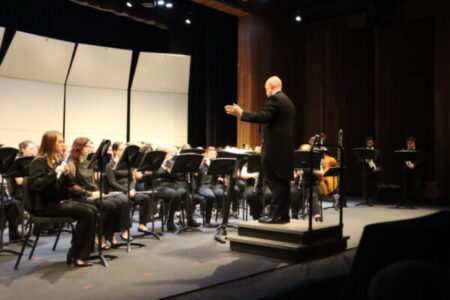Looking for some classical pieces to listen to this winter that aren’t The Nutcracker or Vivaldi’s “Winter?” This list of 6 classical works includes some fantastic oratorios, movements and even a symphony to treat your ears to through this chilly season.
1. From Claude Debussy’s Children’s Corner: “The Snow is Dancing”
Debussy’s Children’s Corner aimed to capture the playfulness, wonder and joy of childhood. As with many of Debussy’s works, this is a delicate but powerful piece. It moves quickly but fluidly, using a traditional children’s song Debussy was familiar with as the theme. It depicts the wonder and playfulness not only of snow, but also of children who scurry outside to play in it the moment snowflakes begin to fall. There is a quiet awe of the snow’s beauty accompanying the tremendous underlying power the phenomenon of snowfall holds. Overall, it is a beautiful, reflective and graceful piece for the winter season.
2. Haydn’s “The Seasons: Winter”
What begins as a gloomy, bleak, but serenely gorgeous oratorio, Haydn portrays winter as a season of death and chill (“Across the frozen wilderness of ruthless, / glacial savageness, / A ghostly pallor covers all”) before breaking into joyous praise for God’s glory and goodness in a riveting finale. One of the characters, Simon, references the previous three seasons performed as a metaphor for a man’s life. Spring and summer are full of youth, autumn full of work and winter foreshadowing “an open grave.” But, the chorus sings, this grave is not our end, but simply the door to God’s heavenly kingdom. Thus, out of death, there is life, just as spring comes after winter, and one may see “The gates of Heav’n fling open wide, the Holy Mount [appearing].”
3. Rimsky-Korsakov’s “The Snow Maiden”
If a heartbreaking opera based off a Russian folktale is what you need to get in the wintry mood, “The Snow Maiden” may be perfect for you. The opera centers on, of course, a girl called Snow Maiden, the daughter of Father Winter and Mother Spring. Snow Maiden expresses her desire to live with the nearby humans to Father Winter and Mother Spring, because she loves the music they play. They grant her request and send her to an old childless couple who come to love Snow Maiden dearly. However, because she is the Snow Maiden, she brings winter wherever she goes, which will not leave so long as she remains. Snow Maiden looks around and sees that the other young men and women of the village fall in love with one another and experience a wonderful joy—something she does not understand, because she has a heart of ice. Wishing to know what they know, she implores Mother Spring to let her experience love. Her mother grants her wish, but when Snow Maiden excitedly professes her love to a young man, she melts away with her heart of ice. Springtime returns again, leaving Snow Maiden’s lover heartbroken.
4. “The Seasons: Winter” by Alexander Glazunov, choreographed by Marius Petipa
This ballet premiered in 1900 as a ballet divertissement, a ballet intentionally lacking a plot and created as a mere spectacle of pleasant enjoyment. “Winter” aside, the ballet simply reflects the coming and going of the seasons, representing nothing other than nature’s natural cycle. The music of “Winter” is a collection of playful, light, and whimsical pieces along with some serene, graceful pieces as well, sweetly capturing the two natures of the season.
5. Pyotr Ilyich Tchaikovsky’s “The Seasons,” Op. 37, “January: By the Hearth”
“By the Hearth” is one of twelve commissioned pieces that depict one of the months in the year. January’s piece is one that rings with comfort and touches of nostalgia as one imagines sitting by warm, glowing embers as fluffy snowflakes fall outside a frosted window. The piece progresses and takes on a faintly whimsical, playful tone that could perhaps reflect a comfortable daydream unfolding before returning to the original, nostalgic theme that played at the start. It’s truly an ideal piece for a cozy snow day spent indoors. An excerpt of selected poetry would be added for reflection to every month’s piece by Nikolay Bernard. Below is the selection for “By the Hearth”:
A little corner of peaceful bliss,
the night dressed in twilight;
the little fire is dying in the fireplace,
and the candle has burned out. (Alexander Pushkin)
6. Pyotr Ilyich Tchaikovsky’s Symphony No. 1, Op. 13 (“Winter Dreams”)
A sublime work, Tchaikovsky’s first symphony was met with success and praise at its premiere for good reason. While the symphony sounds like a program symphony, Tchaikovsky actually did not write a narrative with this work, leaving many of the romantic, enchanting melodies and themes to be uniquely formulated into stories by the individual. Only the first and second movements are accompanied by a narrative title. However, it’s quite difficult not to imagine a wintry tale to unfold for how distinct and rich each movement of this symphony is. The first movement, “Dreams of a Winter Journey,” is an exuberant adventure ringing with excitement and wonder; the second movement, “Land of Desolation, Land of Mists,” is hushed but haunting before building up to a tumultuous climax; the third movement, similar to “Dreams of a Winter Journey,” is vivacious and is touched with moments of romantic awe; and the final movement is a colorful, rousing collage of folk music, dancing and joy.






Wonderful read.
Comments are closed.